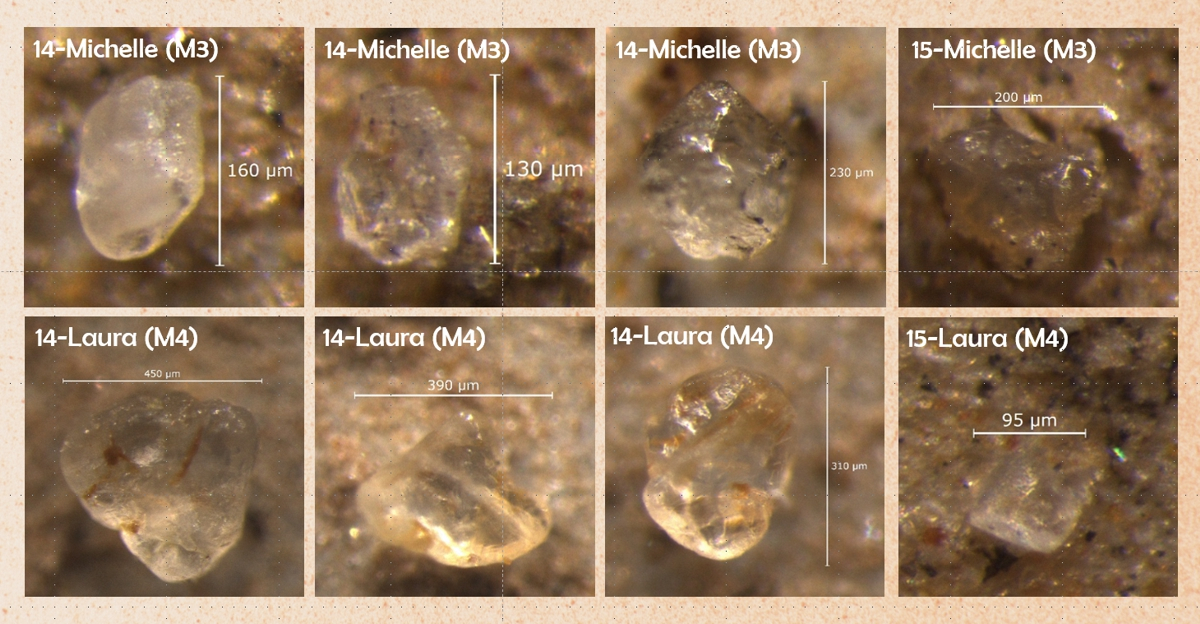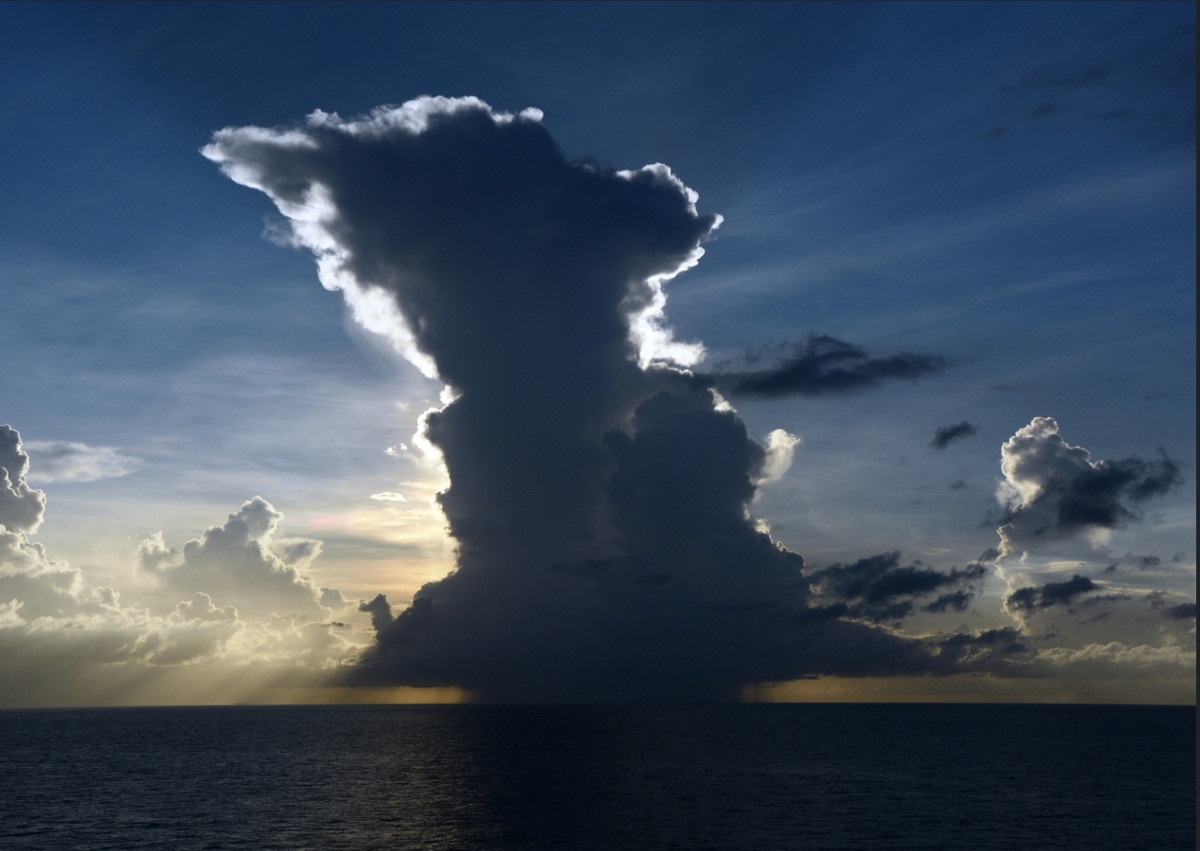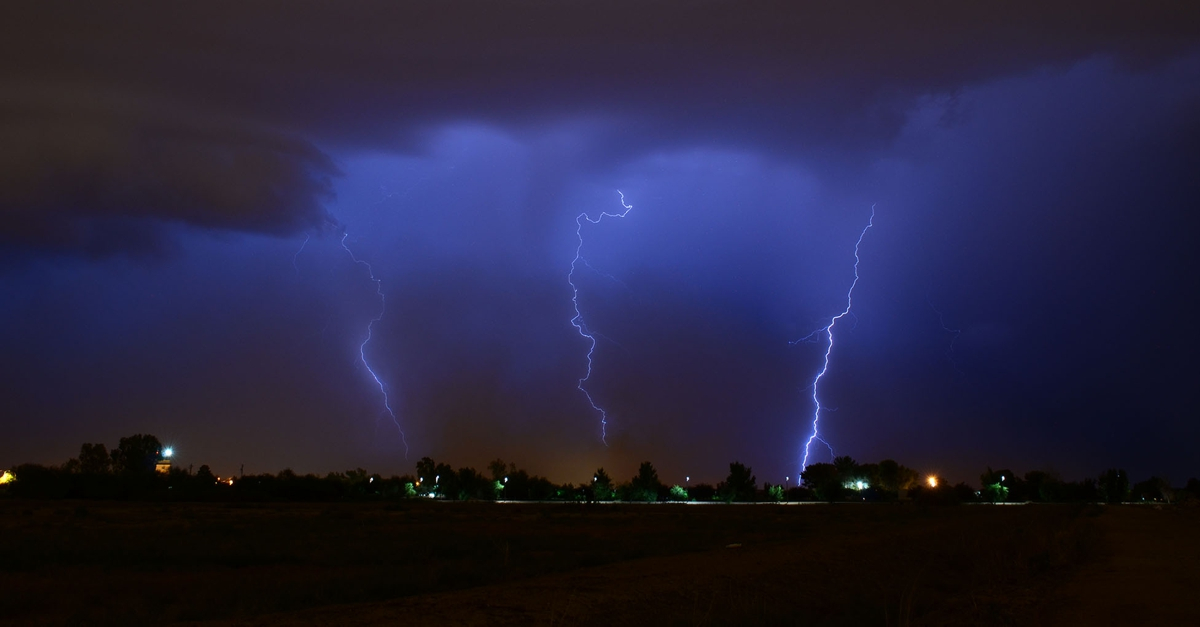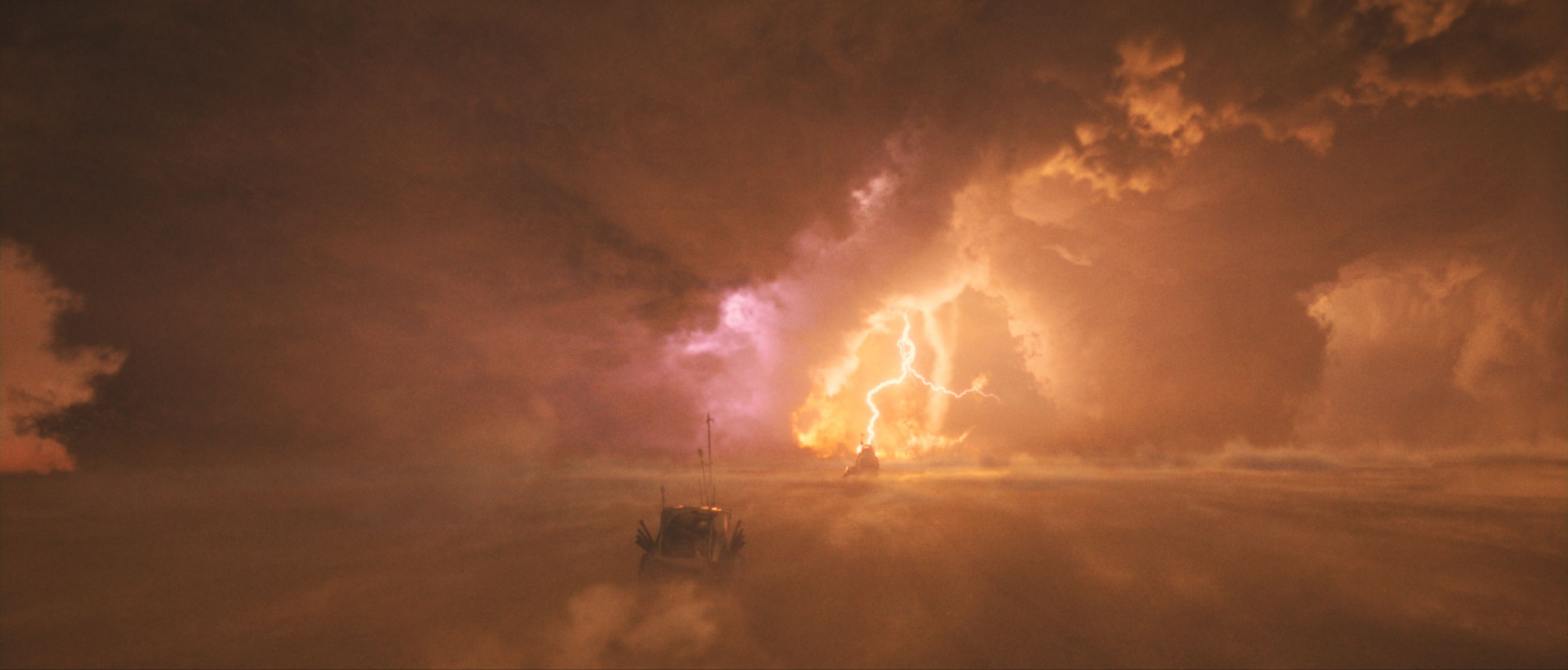In climate models that are based on physical laws and meteorological principles, dust particles were always assumed to be smaller than 10µm although in numerous studies it was shown that particles collected from the atmosphere at sea as well as found in marine sediment cores were much larger: up to several hundreds of micrometers. In addition, already in the 1980's so-called "giant particles" (>75µm) were found at remote places that could only have travelled through the air. In their new paper, Van der Does and colleagues push these boundaries even more with particles up to 400µm collected from the atmosphere over the remote Atlantic Ocean.
In the projects TRAFFIC (funded by NWO) and DUSTTRAFFIC (funded by ERC) we constructed dust-collecting buoys and deployed them in the middle of the equatorial north Atlantic Ocean, right below the core of the Saharan dust plume and up to 3,500km from the African coast. There were three PhD students in the project: Carmen Friese, Laura Korte and Michèlle van der Does and each of them had "their own" buoy. Below you see photos of individual particles collected on these buoys.

Somehow these large particles are kept aloft. In the paper Michèlle and her colleagues propose and discuss a number of potential mechanisms. One of these is repeated uplift by convective cells. Below you see a photo of a cumulonimbus cloud near Barbados (photo credits: Stuart Axe, published on flickr), which results from convective cells, and which typically occur along latitudinal bands in the (sub)tropics. In these cells, air rises at a speed of up to 20 m/s and as a result, particles are lifted to several kilometers altitude within minutes. At the anvil at the top of these clouds, particles can be ejected and settle towards the ocean. Before hitting the ocean surface, they could well be lifted up in a new (or moving along) convective cell and be lifted up into the atmosphere again. Using the ambient meteorological conditions during the time period when the above dust particles were collected, wind trajectories were calculated and it turned out that only four such repeated uplift cycles already suffice to bridge the distance between African coast and buoy Michelle at 12oN/38oW (>2,000km). This could well be possible, especially in summer when there are many such fronts of convective cells.

Another potential mechanism to keep the giant particles suspended in the air across large distances is a process called tribo-electrification. This process is also known as static electricity and is caused by particles charging through colliding into each other. This phenomenon has frequently been observed in dust clouds where charges built up so high that flashes of lightning occurred. See picture below (lightning in a dust cloud near Chandler, Arizona, USA on 11 August 2015. Picture by DenebVegaAltair, posted on imgur).

The phenomenon was picked up by the producers of the movie "Mad Max, Fury Road", in which gigantic dust clouds are kicked up by vicious winds and in which also lightning flash frequently. Such static energy was observed in the dust clouds caused by hurricane "Ophelia" in summer 2017, and hypothesised to be responsible for keeping large particles suspended in air for much longer than hitherto assumed possible.

Additional mechanisms include "simply" strong winds and turbulence that could e.g. occur along boundaries between air masses in the atmosphere. Further research is needed to study these processes but a very clear conclusion from this paper is that meteorological models and climate models need to be adjusted to allow for these large particles as they have a potentially dramatic effect on the atmosphere's radiative properties but also on the carbon cycle in the ocean where large particles can faciliate export of organic matter to the ocean floor.
Please also see the press release on the NIOZ website (in Dutch).
Citation and link to the paper:
Van der Does, M., Knippertz, P., Zschenderlein, P., Harrison, R.G., Stuut, J-B.W.
The mysterious long-range transport of giant mineral dust particles
Science Advances, December 2018
DOI: 10.1126/sciadv.aau2768